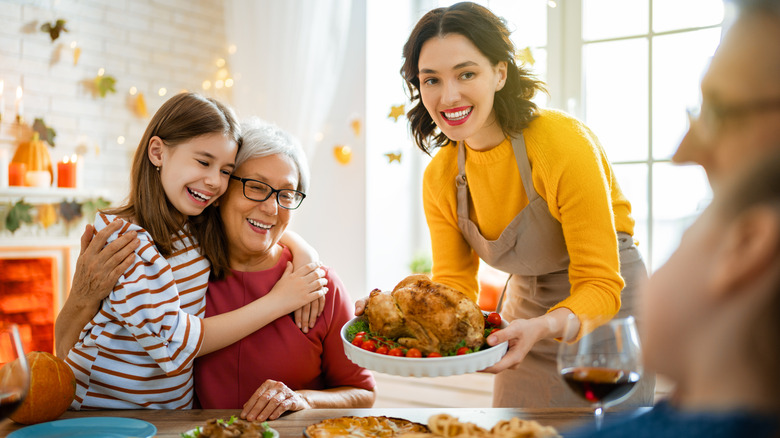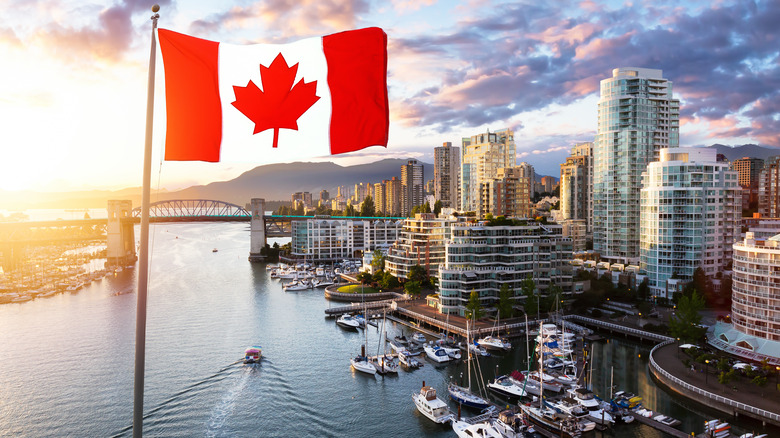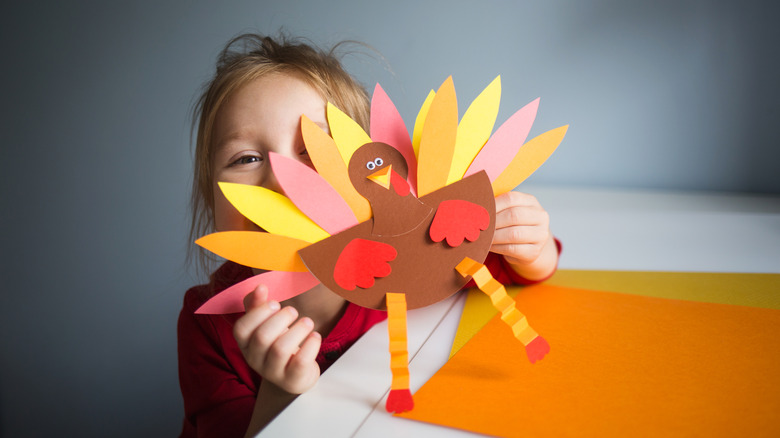How Thanksgiving In Canada Is Different Than In The U.S.
Thanksgiving occupies a unique place among America's annual national holidays. Unlike Christmas, it didn't exist before the country was settled and unlike Independence Day, it didn't gain widespread acceptance on the first try. Indeed, it took a Civil War and a government decree to make Thanksgiving a national holiday in the United States, notes History.
The holiday has been attached, however tenuously, to a narrative about a shared meal of friendship between the early colonists and neighboring Native Americans. And although that shared meal actually happened, much of the popular culture associated with it is downright false (though we eat turkey on Thanksgiving, the settlers almost certainly didn't, according to NPR News, opting instead for venison and fowl), and it ignores some rather uncomfortable truths about the relationship between the colonists and the Natives.
But though Thanksgiving is a revered holiday among many Americans, it is not solely an American holiday. Canada was also settled by Europeans who interacted with Native peoples (typically referred to as First Nations in Canada), and our neighbors to the north have taken their own Thanksgiving celebration and made it purely Canadian.
Canadian Thanksgiving is a much more low-key affair
In the U.S., Thanksgiving is the biggest Thursday of the year. In Canada, Thanksgiving is much more a typical Monday — albeit an occasion nevertheless celebrated, according to CNN. After spending decades trying to find the right date, the Canadian government eventually settled on the second Monday of October. Most Canadians simply observe the holiday on the weekend before or after, rather than on the actual day. Indeed, not all Canadian employers even give their workers the day off.
The historical narrative surrounding the Canadian Thanksgiving is somewhat different, as well. While the American holiday is tied to an uplifting (though increasingly disputed) narrative about friendship, cooperation, and overcoming odds, Canada's holiday specifically honors Sir Martin Frobisher, who arrived in what is now Canada in 1578 (nearly 50 years before the American colonists arrived in Massachusetts). After he and his crew made it to safety, they ate a meal of salt beef and mushy peas and gave thanks. And that's it — no First Nations joining in, no myth about turkey. Just a crew of sailors glad they're alive, eating their rations.
Canadians do eat turkey though
Canadians and Americans do largely agree on that mainstay of the Thanksgiving meal; most Canadian Thanksgivings will include turkey, according to Bustle. Similarly, Canadian and American stuffing — at least, those of the Midwest and Upper Midwest — are mostly the same, being based on rice and breadcrumbs. Southern Americans lean more toward corn-based stuffings. However, CNN notes that some Canadians will opt not for turkey, but for something more local. According to Bustle, some Canadians just go for ham or fish. Similarly, a popular Thanksgiving dish in Newfoundland is a boiled-meat dish known as Jigg's Dinner, and in Ontario, the locals lean into Canada's maple syrup industry and make butter tarts, which are pastry bites filled with a buttery-syrup filling.
Both cultures also share another Thanksgiving mainstay: pumpkin pie. However, the Canadian version is less sweet and more spicy than its American cousin, leaning heavily on the cloves, ginger, and other spices that get, by comparison, only a passing glance on the American plate.


